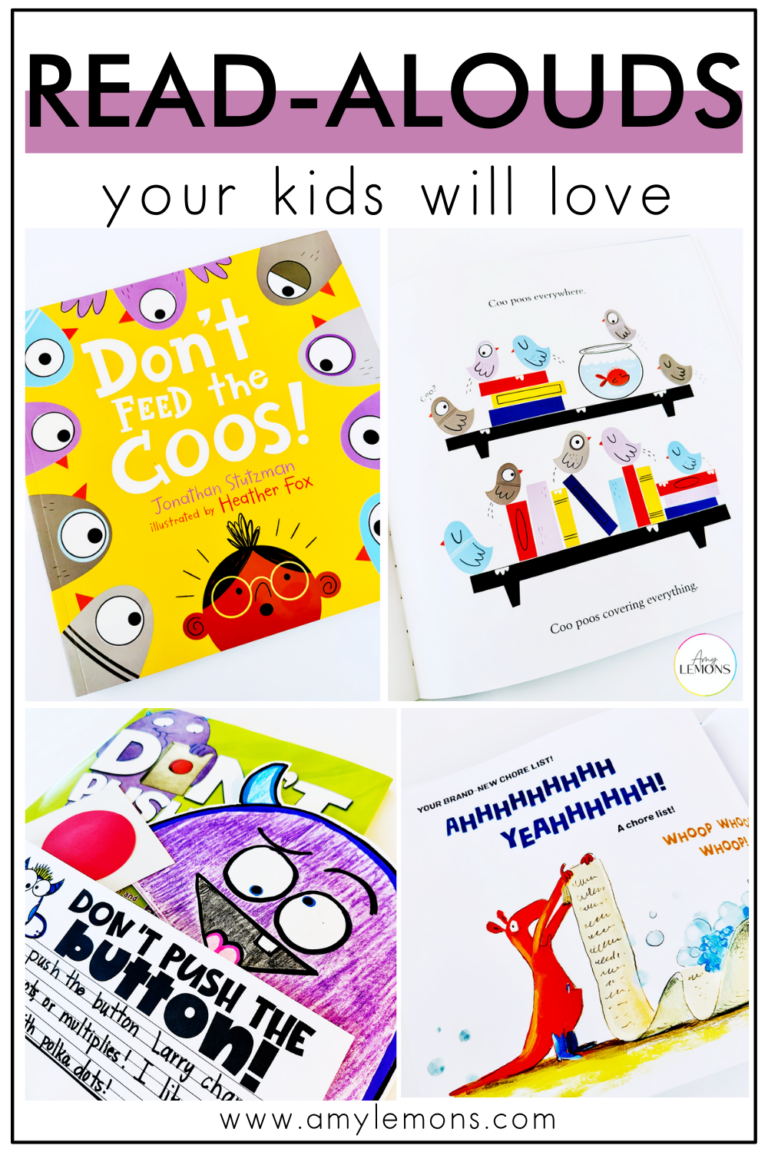
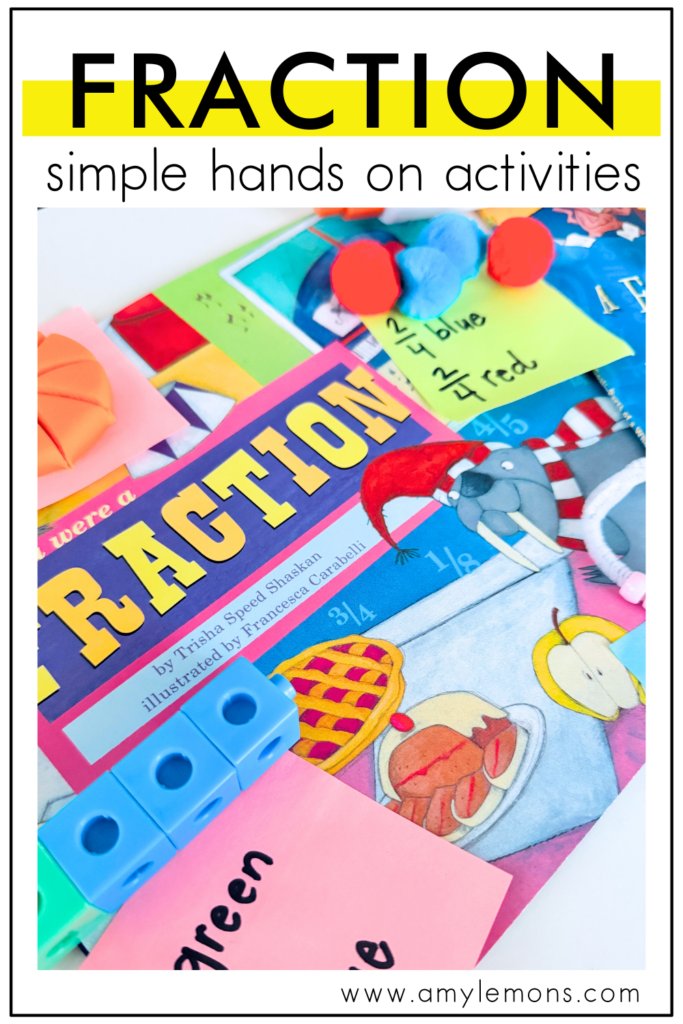
When it comes to teaching fractions, models are essential for turning abstract concepts into concrete understanding. While fraction crafts and food-based activities can be fantastic manipulatives, sometimes you need quick, accessible solutions. I’ve found that everyday classroom items like play dough, linking cubes, pom poms, and dot markers can create engaging, no-prep fraction activities that help students grasp these challenging concepts.
Playdough isn’t just a beloved sensory material – it’s a powerful mathematical modeling tool. For fractions, students use the playdough and its container as a circle template to model parts of a whole.
Using the top of the container, they stamp a circle into the rolled-out dough. A popsicle stick serves as the cutting tool to create fractional parts—halves, fourths, and eighths. This targets the standard of partitioning objects into equal parts.
By stamping circles and dividing them into equal sections, students discover a fundamental concept: as the number of parts increases, their size decreases.
You probably know by now how versatile linking cubes are for math instruction. Linking cubes make engaging manipulatives for modeling fractions based on colors.
Simply supply students with a variety of linking cubes and have them create various fractions. You can have students freestyle, provide them with a set of fractions, or even use a random selection process like spinning to select a number.
These manipulatives offer immediate visual feedback. Students can record color-based fractions, deepening their understanding of parts of a set through hands-on exploration.
For other linking cube activities, check out these 5 dynamic ideas for your next math lesson.
Don’t reserve your dot markers for art projects or color by numbers. Instead, use them for an easy and practical spin on fraction practice.
Using two different colors, students can create arrays or patterns and then analyze the fractional relationships between colors. For instance, if a student creates a pattern where 6/8 of the dots are orange and 2/8 are pink, they’re actively engaging with fraction concepts while having fun.
This simple activity helps students visualize and understand the fractional parts of a set.
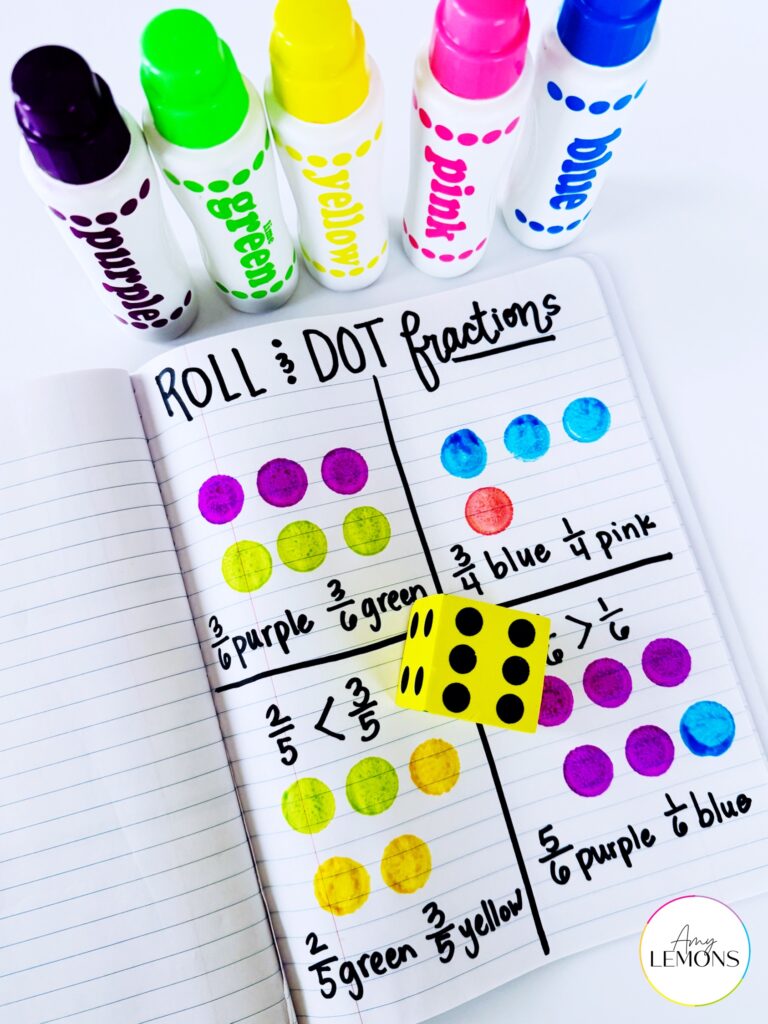
If you’d like to take this activity a step further, grab a number cube along with the dot marker! Students roll the number cube to determine their total number of dots. Then, students determine the model they’d like to create using the dot markers. Students identify the fraction shown for each part of the set. For more advanced learners, compare the fractions. Check out a video of this activity!
Check out a few other creative ways to use dot markers for math practice.
Here goes playdough, again. Did I mention it’s a classroom favorite? Another engaging way to use it in fraction practice is for modeling parts of a set.
Students create balls representing the denominator (the whole), then smash down the number of balls corresponding to the numerator (the part) with their fingers.
The physical act of smashing the playdough makes the learning experience memorable and fun. It’s a strong visual representation to show the differences between denominators and numerators.
There’s beauty in students having a fraction model they can take with them beyond the classroom. Having this visual representation that they can wear adds an extra layer of engagement to learning.
For this activity, you’ll need pipe cleaners and a variety of colorful pony beads. Students can make fraction bracelets by adding their pony beads to the pipe cleaners. After creating their jewelry, students can calculate the total number of beads and record what fraction of the beads was used for each color.
Despite the occasional runaway bead, the lasting visual reminder makes this activity worthwhile.
Pom poms work great when you want hands-on + no mess and no noise. Break out the pom poms and allow students to practice creating fractions for a set amount of time.
Students can work independently or in pairs, creating and identifying fractional relationships. Partner activities can be particularly effective: one student models a fraction while their partner identifies the parts, promoting both mathematical understanding and collaborative learning.
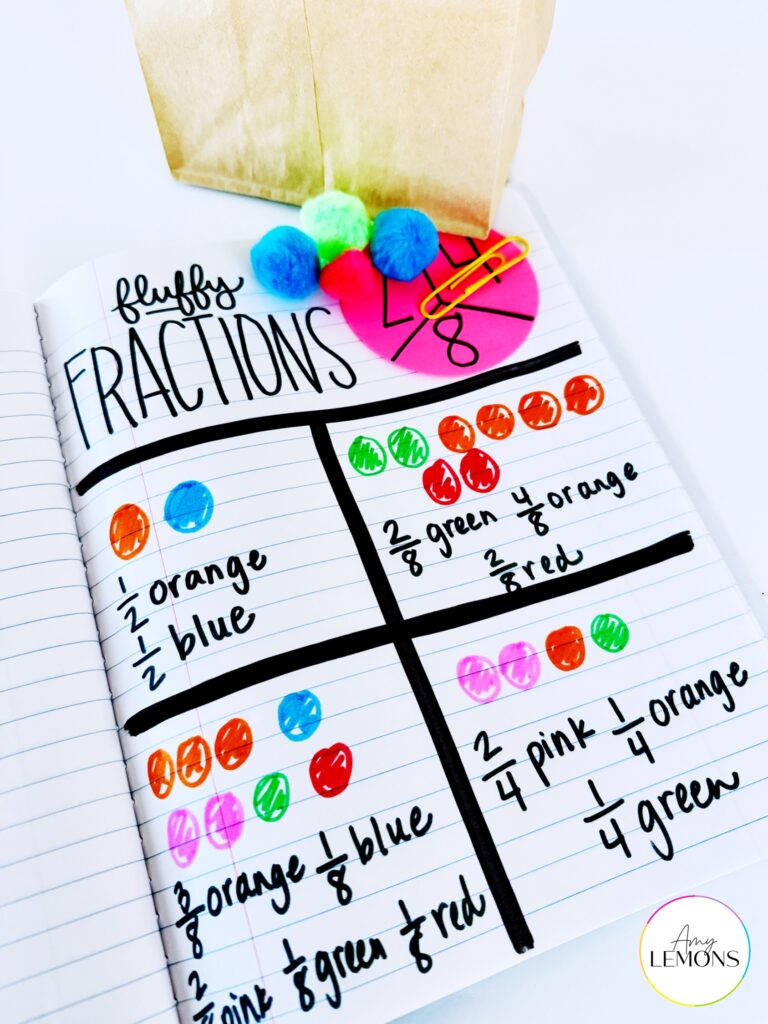
We can extend this pom activity with Fluffy Fractions. Here’s how to play:
Check out of video of Fluffy Fractions in action!
Mixing math and literacy is a game-changer for comprehension. A good math book can help make tricky concepts—like fractions—relatable and easier to understand. Here are some excellent options for teaching fractions:

Hey, y’all! My name is Amy Lemons and I am passionate about providing students with both engaging and effective standards-based Math and ELA lessons.
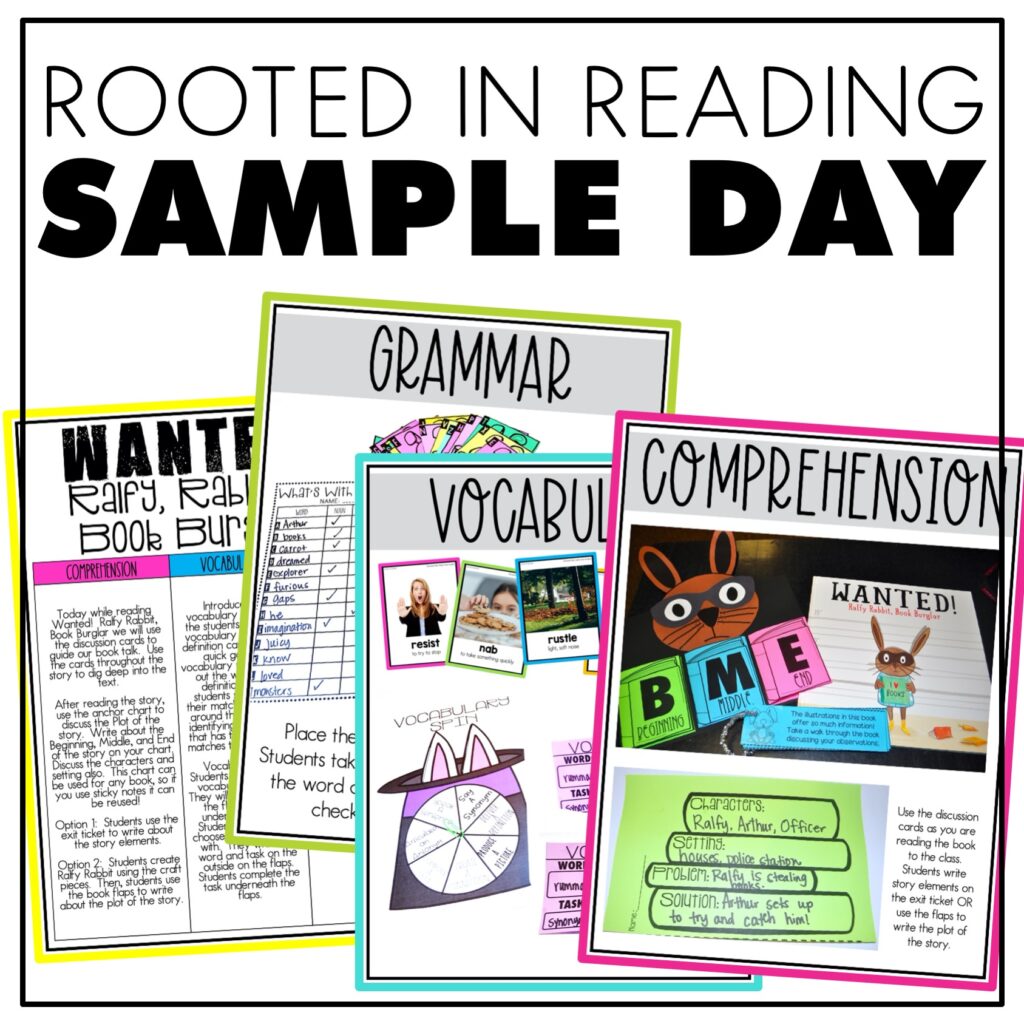
Sample a day of Rooted in Reading with these lesson plans and activities for Reading Comprehension, Vocabulary, and Grammar!